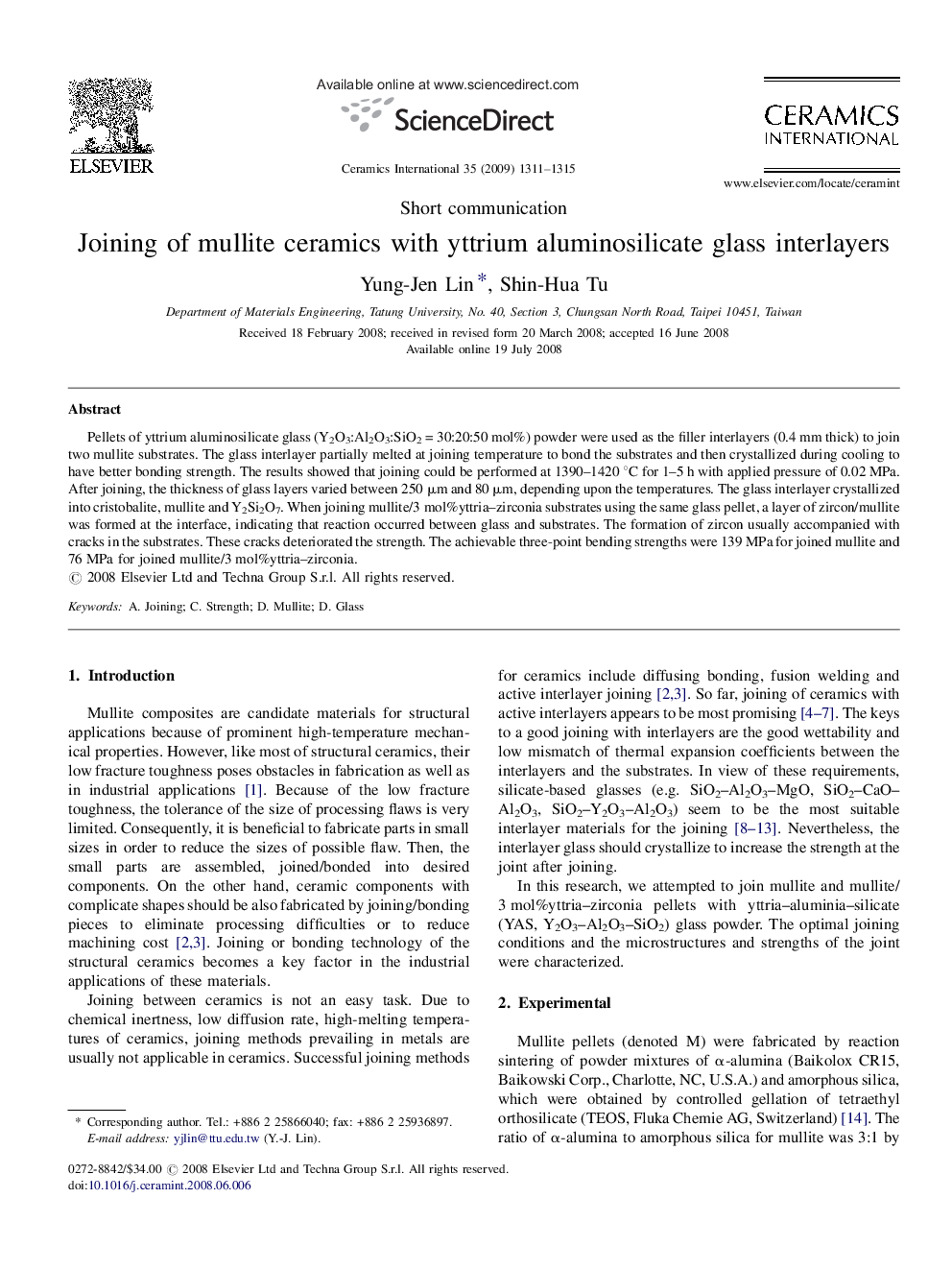| Article ID | Journal | Published Year | Pages | File Type |
|---|---|---|---|---|
| 1463698 | Ceramics International | 2009 | 5 Pages |
Pellets of yttrium aluminosilicate glass (Y2O3:Al2O3:SiO2 = 30:20:50 mol%) powder were used as the filler interlayers (0.4 mm thick) to join two mullite substrates. The glass interlayer partially melted at joining temperature to bond the substrates and then crystallized during cooling to have better bonding strength. The results showed that joining could be performed at 1390–1420 °C for 1–5 h with applied pressure of 0.02 MPa. After joining, the thickness of glass layers varied between 250 μm and 80 μm, depending upon the temperatures. The glass interlayer crystallized into cristobalite, mullite and Y2Si2O7. When joining mullite/3 mol%yttria–zirconia substrates using the same glass pellet, a layer of zircon/mullite was formed at the interface, indicating that reaction occurred between glass and substrates. The formation of zircon usually accompanied with cracks in the substrates. These cracks deteriorated the strength. The achievable three-point bending strengths were 139 MPa for joined mullite and 76 MPa for joined mullite/3 mol%yttria–zirconia.
